Have you ever wondered what makes a hammer drill so effective at drilling through hard materials like concrete and masonry? This post will dive deep into the science behind the hammer drill to understand how it works and why it is the go-to tool for many DIY projects. With its unique combination of rotation motion and rapid strikes, the hammer drill can be a powerful tool that will help you get any job done with ease.
What is a Hammer Drill?
The striking motion creates an intense vibration that makes it easier to break through tough materials like concrete or brick. Hammer drills are most commonly used for drilling into masonry, but they can also be used for other tasks such as driving screws and chiseling surfaces. They typically have more power than regular drills, allowing them to easily penetrate even harder materials. Hammer drills are ideal for creating large holes in walls and foundations when preparing to install pipes or wires or make repairs. While there are many different models available on the market, all hammer drills function in the same basic way by combining rotation and percussion.
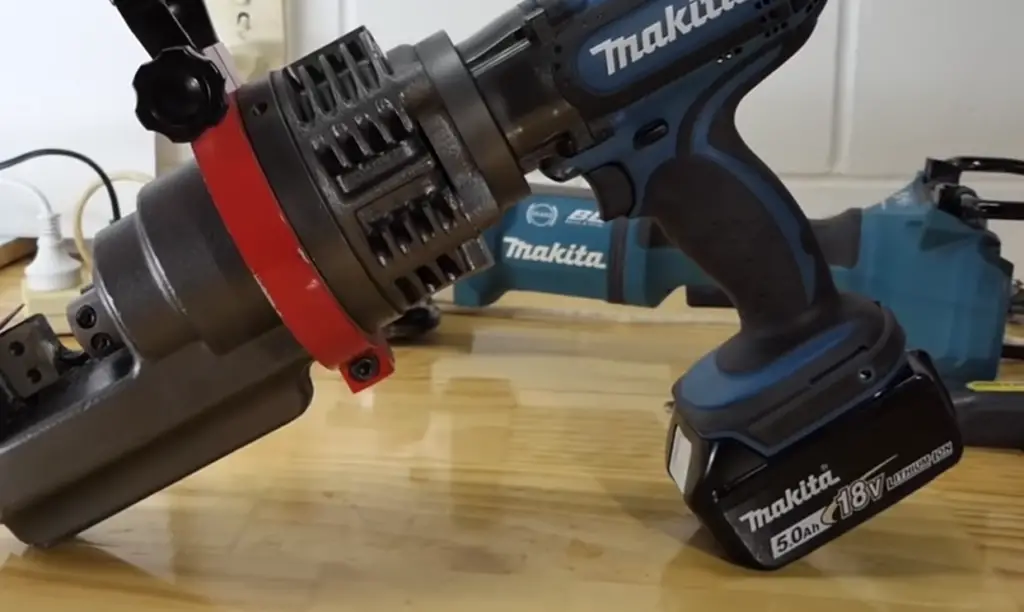
The main differences between models are the power and speed settings. More powerful hammer drills may offer more settings and higher speeds, while less powerful models will have fewer options. Some hammer drills come with a depth stop feature that allows you to set the desired drilling depth so you don’t over-drill into the material.
When choosing a drill, consider what type of materials you plan to work with most often. If you will be working with hard materials like concrete or brick, then a more powerful model may be a better choice. Also look for one that has adjustable speed settings, as this can help ensure more precise results when drilling into different types of materials. Hammer drills can be expensive but they are well worth the investment if you plan to do any kind of masonry work. They can make the job easier and allow you to get more done in less time.
Finally, make sure that the hammer drills you choose are compatible with the power source needed for your project. Most hammer drills require an electric outlet or generator to operate, so check this before making a purchase [1].
What Are The Components Of A Hammer Drill?
A hammer drill consists of five main parts: the power source, the chuck or collet, the hammer clutch, the hammer mechanism, and the chuck guard.
The power source is typically an electric motor that supplies energy to turn a gearbox. The gearbox then drives a rotating shaft that powers the other components of the drill.
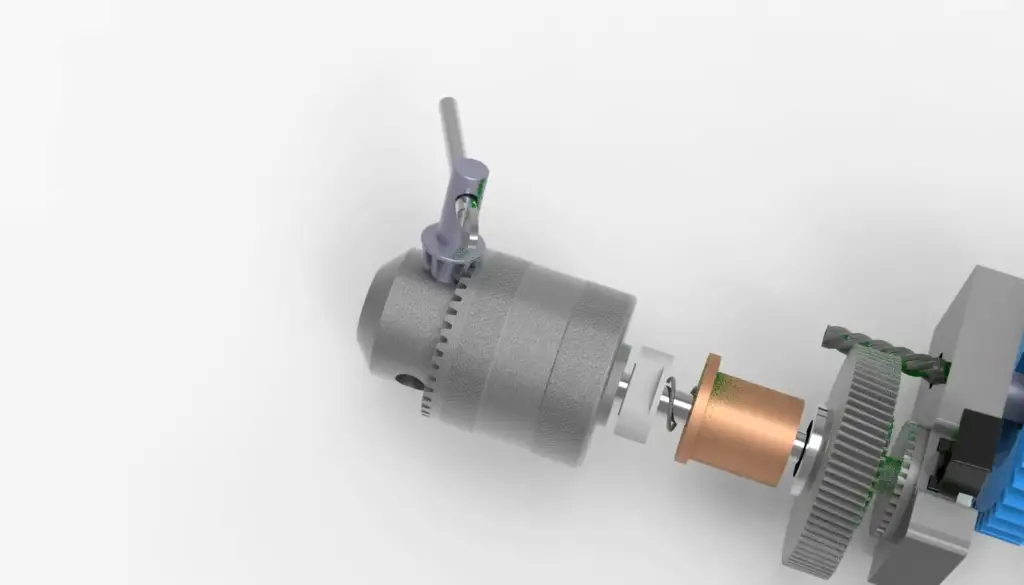
The chuck or collet is a device used to hold onto bits and accessories while they are being used in drilling applications. It is mounted on top of the rotating shaft and is usually adjustable to match different sizes of bits.
The hammer clutch is what allows you to switch between regular drilling mode and hammer drilling mode by engaging or disengaging it. When engaged, it will cause the drill bit to move in a hammer-like motion that is much more powerful than regular drilling.
The hammer mechanism is responsible for providing the extra power and force necessary for hammering through tough materials like concrete. This typically consists of two gears that are connected by an inner sleeve which is moved back and forth as the drill operates.
Finally, there is a chuck guard which serves as a safety feature to protect your hands from getting caught in the rotating parts of the drill. It also helps keep debris out of the moving parts while you are drilling.
These five components form the key components of any good quality hammer drill and ensure it will be able to stand up to all kinds of tough jobs. With these components working together, you can make sure your job is done quickly and safely.
By understanding the components of a hammer drill, you can make sure to choose one that is best suited for your project and will be able to get the job done right the first time. With the right drill in your hands, you can take on any task with confidence.
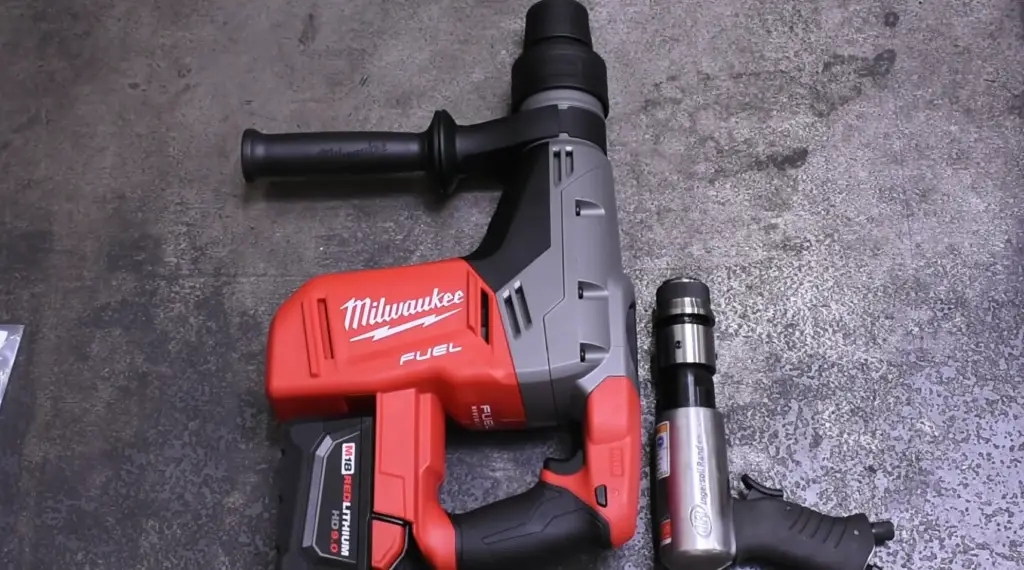
Step-by-Step Guide to Using a Hammer Drill
Mark the Surface
Before you start using a hammer drill, it is important to mark the surface you will be drilling into. This helps you make sure that all your holes are even and in the right place. You should use either a pencil or a marking tool specifically made for drywall. Make sure the markings are clear and easy to see before you begin.
Choose the Right Bit
Choosing the right bit for your job is essential for successful drilling. Hammer drills require different types of bits depending on what type of material they are being used on. Bits designed for concrete or masonry can easily chip away at these surfaces, while wood bits have sharp flutes that cut through wood quickly and cleanly without splintering or damaging it. Additionally, using a bit that is too large or too small for the hole you are drilling can also cause damage to both the material and the drill itself.
Adjust the Hammer Setting
Once all of your materials are ready, it’s time to adjust the hammer setting on your drill. Depending on the type of material you are drilling into, you may need to use a higher or lower setting than normal. For softer materials such as wood or drywall, you will want to keep your hammer setting low so that the drill doesn’t over-penetrate the surface. For harder materials like concrete or masonry, a high-power hammer setting will be necessary to get through these surfaces quickly and accurately.
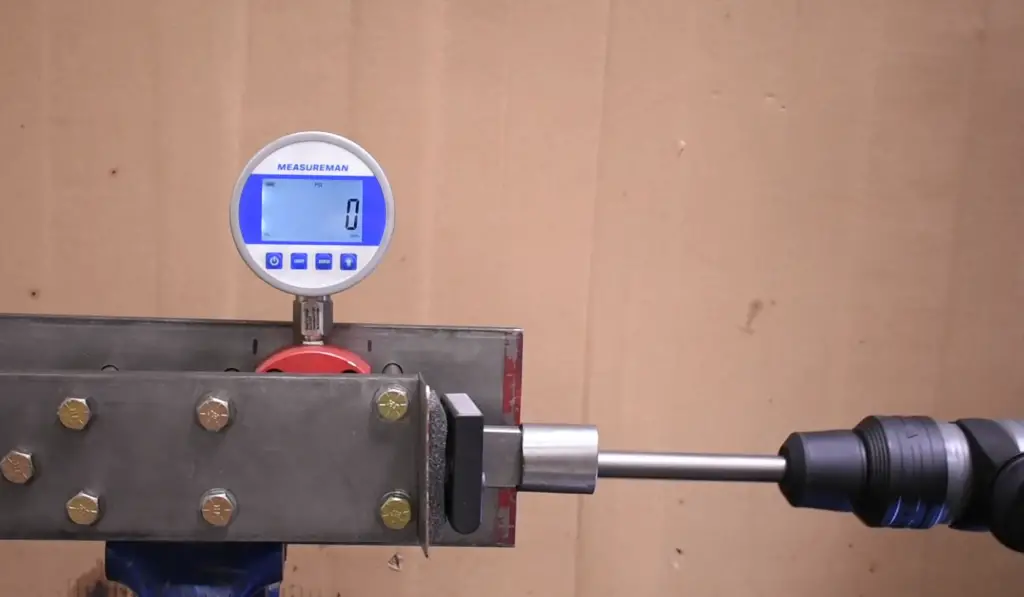
Drill Into Your Markings
Once your drill is ready to go, you can begin drilling into the surface.
Additionally, keep an eye on the speed of the drill bit – if it starts to spin too quickly or slow down, adjust the speed setting so that it remains consistent throughout.
Finish Up
When you have finished drilling your holes, turn off your hammer drill and set it aside safely. Use a brush or vacuum cleaner to remove any dust created by drilling and inspect your work for accuracy. Once everything looks good, you’re done! Hammer drills are a great tool for quickly and efficiently drilling into a variety of materials. Following these steps will help you get the job done right the first time [2].
Hammer Drill vs. Rotary Drill: What’s the Difference?
When it comes to drilling holes and driving screws, the two most popular tools are a hammer drill and a rotary drill. While these tools might look similar on the surface, they have some key differences that make them suitable for different types of jobs. Knowing when to use each tool can help you achieve better results with your projects.
A hammer drill is an electric or cordless power tool that combines rotational power with a rapid pounding action. The repeated striking motion allows it to easily chisel through tougher materials such as masonry, stone, concrete, brickwork, and even steel rebar. With its powerful torque and hammering action, a hammer drill can quickly bore large diameter holes through tough surfaces.
On the other hand, a rotary drill is designed to create small diameter holes in softer materials such as wood or plastic. It utilizes a chuck that holds the drill bit securely and provides the power needed to spin it. The rotating action of the drill bit creates friction, which generates heat that helps soften and cut through soft materials quickly and easily.
When deciding between a hammer drill and a rotary drill, consider what type of material you will be drilling into and how big or deep the hole needs to be. If you are working with hard materials such as concrete or stone, then a hammer drill is essential. For softer materials such as wood or plastic, then a rotary drill should do the job nicely. Additionally, if your project requires large diameter holes, then a hammer drill is the better choice since it can bore through more material faster [3].
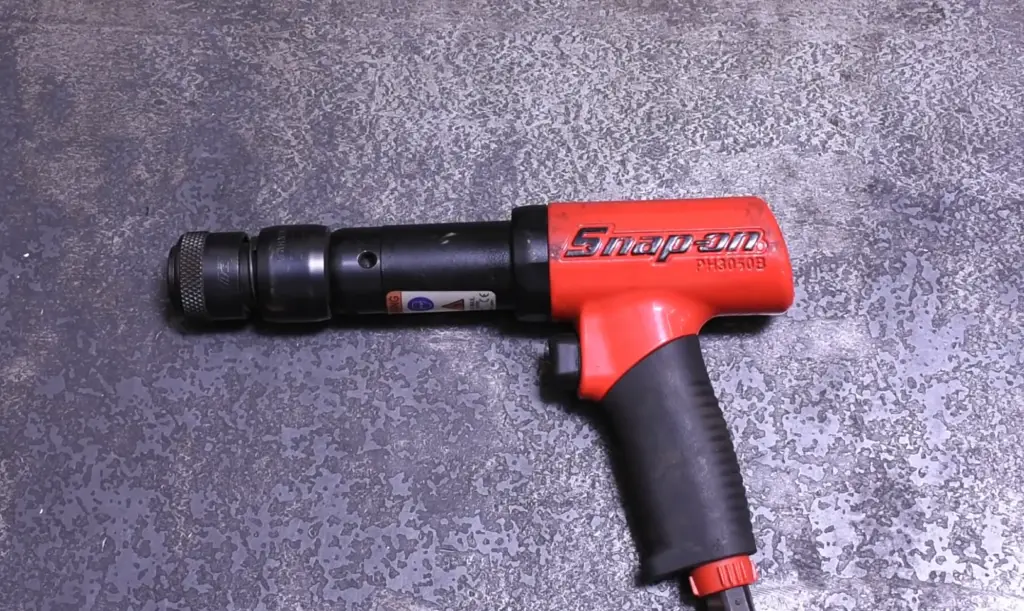
How to maintain a Hammer Drill?
- Check the drill bit before use: Inspect the drill bit for cracks, breaks, or any other problems that may affect performance. Replace any damaged bits before attempting to drill into a surface.
- Use proper safety gear: Wear safety goggles and gloves when drilling to protect your eyes and hands from flying debris and fragments of wood or metal.
- Keep your hammer drill clean: Dirt and dust can accumulate in the air vents and on other parts of the hammer drill over time. Use an air compressor to blow out any dirt, debris, or dust from these areas regularly to keep your tool in top condition.
- Clean up after each use: After using your hammer drill, make sure to wipe down the exterior with a damp cloth to remove any wood splinters, metal chips, or other materials that may have become lodged in the piece.
- Replace worn-out parts: If parts of your hammer drill are starting to wear out or break, replace them immediately to ensure continued performance and safety.
- Store properly: Store your hammer drill in a dry place when not in use to prevent rusting and deterioration of internal components. Make sure it is turned off before storing it away for extended periods.
- Lubricate moving parts regularly: To prevent friction and prolong the life of your hammer drill, lubricate all moving parts regularly (at least every six months). Use WD-40 or a similar lubricant to lubricate the drill bits and other parts.
- Take regular breaks: When using your hammer drill for an extended period, make sure to take regular breaks to prevent fatigue and injury. This will also help you avoid making mistakes that can damage your tool.
Follow these steps to keep your hammer drill in top condition and avoid costly repairs down the line. With proper care and maintenance, you’ll be able to enjoy the benefits of this powerful tool for years to come [4]!
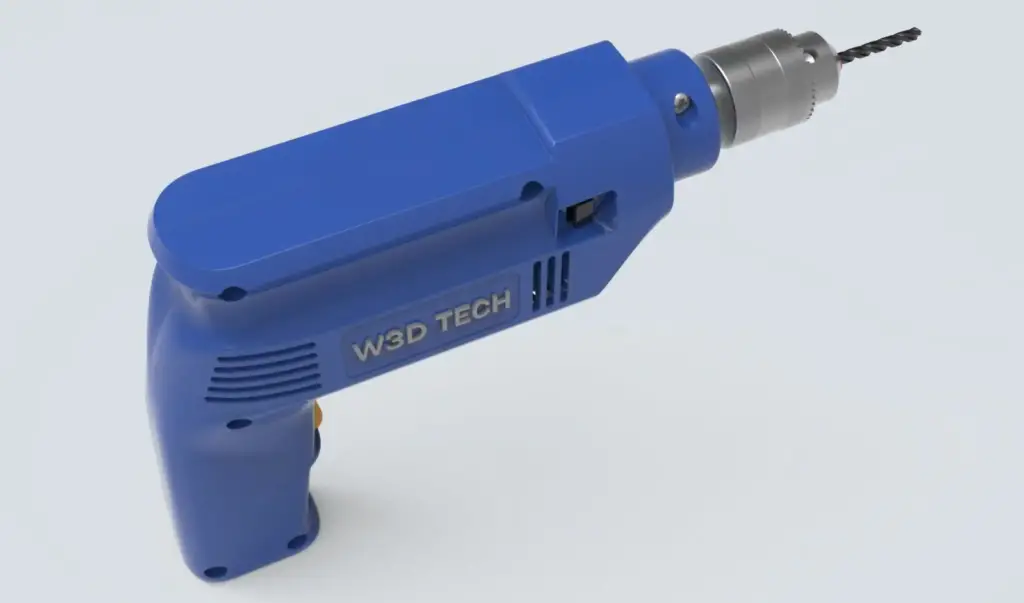
FAQ
Can I use a hammer drill as a regular drill?
Yes, you can use a hammer drill as a regular drill. However, it is important to note that the hammer drilling function has been designed for more intensive tasks and will not provide the same performance as a dedicated regular drill. If you are using your hammer drill for lighter work such as drilling into wood or plastic, make sure to switch off the hammer action before starting. This will prevent damage to the materials you are working with and ensure optimum performance from your tool.
Additionally, when using a hammer drill in regular mode remember to use lower speed settings than normal as the higher speeds may cause excessive wear on non-hammering components of the tool. Finally, bear in mind that due to the increased torque and vibration produced by hammer drills, they should be used with higher-quality drill bits that are designed to withstand the extra strain.
Can I use a hammer drill to cut through metal?
No, you should not use a hammer drill for cutting through metal as it is not designed for this purpose. For metalworking applications, you should use an appropriate power tool such as a rotary cutter or jigsaw. These tools have been specifically designed for cutting hard materials and will provide better results than using a hammer drill. Additionally, remember that when working on harder materials like metal always wear protective gear such as gloves and safety glasses to prevent any potential injuries from occurring.
What type of bit should I use in my hammer drill?
When using your hammer drill, it is important to select the right bit for the job. For masonry drilling, you should use a carbide-tipped bit as they have been specifically designed for this task and will provide better results than regular drill bits. For woodworking applications, however, you can use either a spade or auger bit depending on your needs. Finally, always be sure to check the manufacturer’s instructions before using any drill bit to ensure proper usage and safety.
Is a hammer drill better than a regular drill?
It depends on the task you are trying to complete. Hammer drills are specifically designed for heavier-duty applications such as masonry and concrete drilling, while regular drills are better suited for lighter activities like woodworking or plastic drilling. Additionally, hammer drills produce more torque than regular drills and can even be used to loosen rusty bolts or screws in certain situations. Ultimately, it is important to select the right tool for the job to ensure optimum performance and safety.
Do I really need a hammer drill?
That depends on the types of projects you plan to undertake. If you only need to drill into wood, plastic, and other softer materials, then a regular drill will suffice. However, if you are planning on drilling into masonry or concrete more frequently, then it may be beneficial for you to invest in a hammer drill as they have been specifically designed for this purpose and can provide better results than using a regular drill. Additionally, bear in mind that hammer drills produce more torque and vibration than regular drills and are therefore best suited for heavier-duty tasks. Therefore it is important to consider your needs before investing in any tool.
What is the difference between a hammer drill and a simple drill?
The main difference between a hammer drill and a regular drill is that a hammer drill is equipped with an additional feature known as “hammering”. This setting produces rapid impacts against the material you are drilling into, resulting in increased torque and making it easier to penetrate harder materials such as masonry or concrete. Regular drills, on the other hand, do not have this function and are better suited for lighter work such as woodworking or plastic drilling. Additionally, hammer drills produce more vibration than regular drills so it is important to use higher-quality bits when working with them. Finally, always be sure to check the manufacturer’s instructions before using any tool to ensure proper usage and safety.
Why is a hammer drill better?
A hammer drill is better than a regular drill because it provides improved performance when drilling into harder materials such as masonry or concrete. The “hammering” setting produces rapid impacts against the material you are drilling into, resulting in increased torque and making it easier to penetrate these tougher materials. Additionally, hammer drills produce more vibration than regular drills so it is important to use higher-quality bits when working with them. Finally, always be sure to check the manufacturer’s instructions before using any tool to ensure proper usage and safety.
Can I use a hammer drill on wood?
Yes, you can use a hammer drill on wood but make sure to switch off the hammer action before starting. This will prevent damage to the wood and ensure optimum performance from your tool. Additionally, when using a hammer drill in regular mode remember to use lower speed settings than normal as the higher speeds may cause excessive wear on non-hammering components of the tool. Finally, bear in mind that due to the increased torque and vibration produced by hammer drills, they should be used with higher-quality drill bits that are designed to withstand the extra strain.
What should I look for when buying a hammer drill?
When looking for a suitable hammer drill you should consider factors such as power, size, weight, and additional features. Power is particularly important when drilling into harder materials as more power will result in higher torque and better performance. Additionally, think about how often you plan to use the drill and check the weight of the tool as lighter models tend to be easier to handle during extended use. Finally, look out for additional features such as variable speed settings which can help you tailor your tool to different applications.
Useful Video: How Impact, Hammer and Torque Drills work?
Conclusion
A Hammer Drill is an incredibly useful tool to have in your arsenal, especially if you’re a professional contractor. It is not only able to easily break through tough materials with its powerful hammering action but also drives screws quickly and efficiently. With the proper safety precautions, a Hammer Drill can be used safely for years of reliable use. No matter what type of job you may have, having a Hammer Drill on hand will allow you to complete it with minimal hassle and great results!
References
- https://www.tooled-up.com/blog/drill-vs-hammer-drill/
- https://www.electronicshub.org/how-do-hammer-drills-work-and-uses/
- https://www.protoolreviews.com/rotary-hammer-vs-hammer-drill/
- https://www.forconstructionpros.com/concrete/equipment-products/article/10288515/6-tips-for-rotary-hammer-maintenance






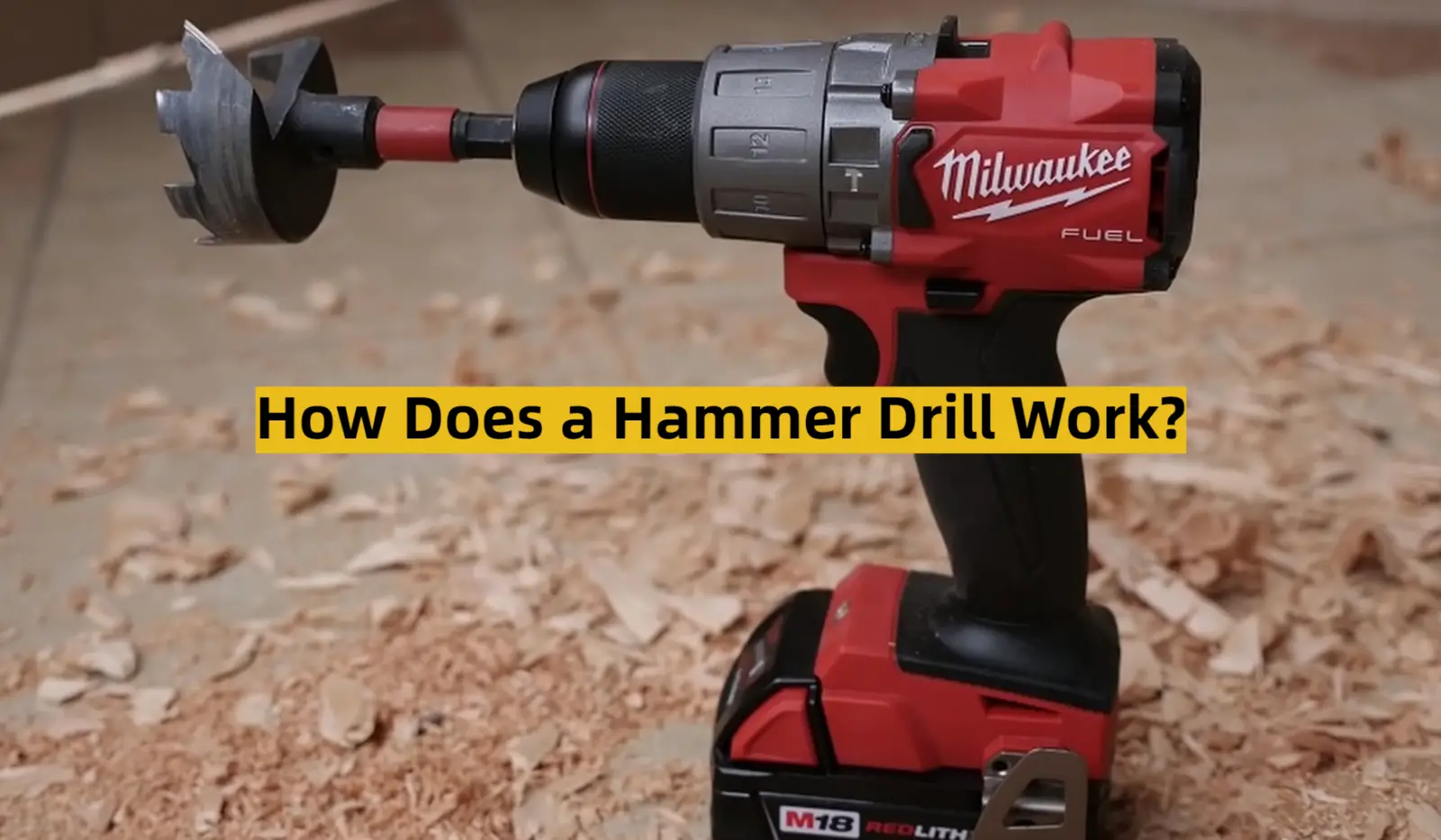




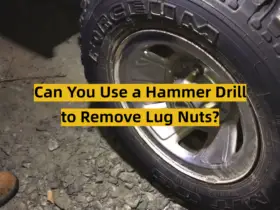
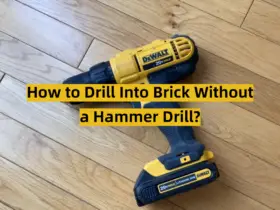
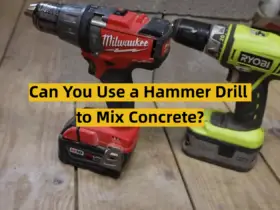
Leave a Reply